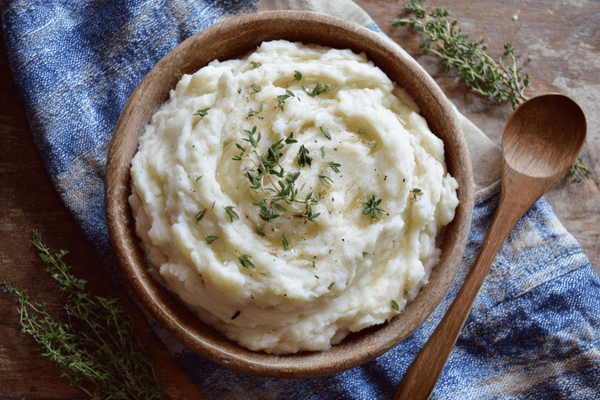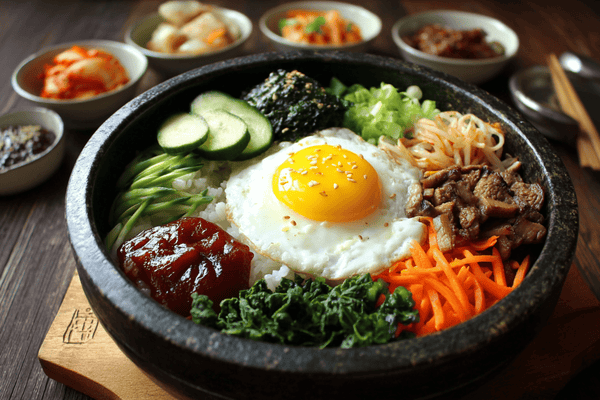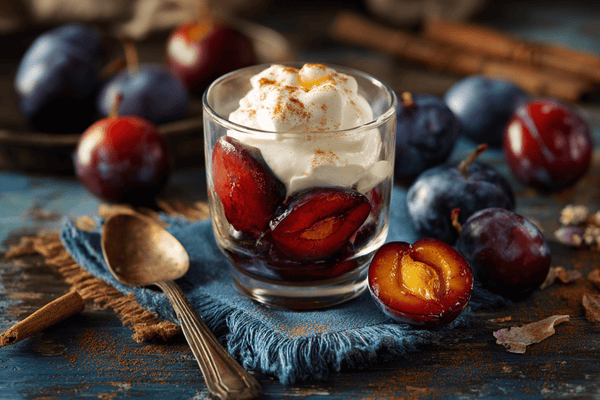
Anyone researching Japanese knives is likely to come across terms that they unfamiliar with like a double and single bevel, Granton edge, whetstone, and some of the knife names alone can be difficult to remember (Santoku, Gyuto, Deba, Yanagiba, Nakiri, and Usuba to name just a few).
Another term that you are likely to come across either when researching or buying a Japanese knife is pakkawood or also spelt, pakka wood or paka wood.
Pakkawood is a wood and resin composite that is engineered primarily for durability and resilience to hard-wearing use. Pakkawood is a heat and moisture resistant composite making it an ideal material for kitchen utensils, primarily in the form of a knife handle and it is often the material of choice for Japanese knife handles.
As pakkawood is a human-manufactured material, there is not as much information available on this material as there is on natural woods, and in this article, we cover everything you need to know about pakkawood and why it’s such a commonly used material in Japanese knives.
Table of contents
What Is Pakkawood?
As mentioned earlier, pakkawood is not a naturally occurring wood and is a composite material that is engineered from wood and resin to create a new material with special characteristics, properties and purposes.
According to the Oxford dictionary, Pakkawood is a hard wooden laminate that is resistant to heat making it ideal for use in military equipment, kitchen utensils, and most commonly, kitchen knives.
The wood veneer of the pakkawood is submersed in resin and subjected to intense heat to bond the ingredients together and fuse multiple layers; the industrial process is often referred to as thermosetting because heat energy is used during the curing process which hardens or sets (fixes) the material.
The industrial process to make pakkawood was first patented in Japan by Toshiaki Oishi after he created the material in 1969.
While pakkawood is not a naturally occurring material, the manufacturing process is designed to create a natural wood effect that you’ll see on a lot of knife handles whilst eliminating a lot of the disadvantages that come with using natural wood.
Natural wood is prone to splitting, chipping, warping and often requires time-consuming maintenance in order to enhance the longevity of the wood. As pakkawood is a pressure-treated, composite material it’s largely resistant to heat, water, warping, and other common disadvantages that you would find with natural hardwoods.
To create such a resilient and long-lasting material, pakkawood needs to go through a specific manufacturing process to minimize the downsides of a natural hardwood whilst also gaining the benefits of a composite material.
How Is Pakkawood Made?

Pakkawood is a man-made material that is manufactured for a very specific purpose, to be resilient and resistant to hard-wearing use.
Natural woods alone are prone to splitting, chipping, rotting, and being quite difficult to maintain in general and the manufacturing of pakkawood is optimized to reduce or even prevent these issues entirely.
All hardwood veneers are manufactured using thin layers of hardwood veneer, which are bonded together under pressure with glue.
As pakkawood is a man-made material, the laminating process is tweaked just enough to suit its purpose making it resistant to heat, water and warping.
Pakkawood, whilst not being a natural wood itself, does still use wood in its manufacturing process. Pakkawood is made from a base material of hardwood veneers like plywood and is then infused with a plastic resin to create a wood/resin composite material.
The initial plywood is vacuumed to remove all moisture from the wood and then the multiple layers are glued together with a phenolic thermoset resin under high pressure. After this process, the ‘wood’ can then be dyed to replicate a wide variety of colors or designs.
Why Do Japanese Knives Use Pakkawood?
Japanese knives are manufactured for heavy-duty, repeated use and therefore need to be durable and long-lasting (especially to justify the initial investment as some Japanese knives can carry a substantial price tag!).
The reason that it is so easy to find a Pakkawood knife set is because this material is hard-wearing and resilient meaning that it’s designed to last just as long as the blade material.
Pakkawood is an innovative improvement in knife handle material as traditionally, a wooden handle was used with Japanese knives and these handles were therefore prone to splitting, chipping, and rotting.
In-depth: Pakkawood in Culinary Arts
The culinary world, with its emphasis on precision and beauty, has embraced Pakkawood wholeheartedly. Knife handles crafted from Pakkawood not only offer superior grip and comfort but also turn each knife into a piece of art.
Table: Comparing Handle Materials
| Material | Durability | Aesthetic Appeal | Maintenance Required |
|---|---|---|---|
| Pakkawood | High | Excellent | Low |
| Plastic | Moderate | Low | Low |
| Stainless Steel | High | Moderate | Moderate |
| Natural Wood | Low | High | High |
Pakkawood apperance and color
One of the key preferences for Japanese knives using pakkawood for knife handles is for the ability to manipulate the design to create a variety of coloured handles.Pakkawood has the versatility to mimic a range of natural wood colors (or finishes) including oak and chestnut as the original plywood used gives the wooden grain effect, or the handles can be dyed to create any color that the manufacturer desires.
A useful feature when utilizing rainbow pakkawood is that during the manufacturing process, the material goes through extensive polishing and sanding when binding the wood and resin giving the final product a gloss finish.
This finish is scratch-resistant and eliminates the need to add additional products to achieve a gloss finish.
How to Care for a Pakkawood Handle

Most high-quality Japanese knives require careful cleaning and maintenance methods in order to maintain the knife's quality and longevity.
As is common practice with Japanese knives, the pakkawood handle is also a high-quality material and requires the same level of care and maintenance as the blade.
The key to properly caring for a pakka handle is the exact same as that needed for the blade and it’s to wash and dry the knife by hand after use.
The pakka wood handle can last a very long time if cared for properly, even in a high pressure environment such as a professional kitchen.
While pakkawood is largely waterproof as a result of the wood/resin combination, it should still be maintained the same way as you would a hardwood handle.
Long duration exposure to water in the form of soaking the knife or placing it in a dishwasher is likely to cause damage to the wood and should therefore be avoided completely.
What are some other pakkawood uses?
Pakkawood is an innovative improvement in knife handle material used by manufacturers of Japanese knives, but it is also being utilized in other areas. Food containers are often manufactured from pakkawood as the material is not reliant on moisture or oxygen to be resistant to rotting or chipping.
Another use for pakkawood is that it can be molded to replicate shells, rocks, and fruit. The material is used extensively by Disney for this purpose, but also in design houses to produce unique pieces of art.
The main advantage of using pakkawood for these purposes is its resistance to damage due to lack of moisture - even saltwater does not affect the material. Pakkawood is a man-made material that is used in a variety of ways, but the primary purpose for which it is used is in knife handles and other hardwearing products.
The manufacturing process does use some natural wood, but the end result provides many benefits over traditional wooden materials including being resistant to moisture and heat.
Final Thoughts
Pakkawood is a very unique material that is extremely well suited for a range of applications that need a more resilient material whilst still maintaining many characteristics of natural wood.Through its pressure-treated process combining plywood and a phenolic resin, pakkawood is an ideal material for Japanese knives that is resilient to heat and moisture whilst also being a long-lasting product.
Correct maintenance is still required, however, the resilient properties and endless potential for colourful designs mean that pakkawood is one of the best materials for a Japanese knife handle and will continue to be a primary option for a number of years to come.
FAQs
Q: Is Pakkawood eco-friendly?
A: While Pakkawood involves synthetic resins, its durability means less frequent replacements, indirectly benefiting the environment. Efforts are ongoing to make the resins more eco-friendly.
Q: What is a pakkawood handle?
A: Pakkawood, also sold as Staminawood, Colorwood, Dymondwood and compreg, is an engineered wood/plastic composite material commonly used in knife handles and other objects that see rough wear. It can closely resemble conventional wood, or come in a range of bright colors.
Q: Are wood knife handles sanitary?
A: Yes but pakkawood has an added bonus of being a good insulator so the knife stays cooler for longer periods of time.
It also has the environmental advantage that it can be used with renewable raw materials instead of relying on scarce old growth lumber.
Furthermore, pakkawood is processed at low temperatures while eliminating toxic gas emissions during production so use doesn’t pose environmental risk unlike wood.
Q:Does Pakka wood come from a pakka wood tree?
A: Pakkawood is made from a range of different hardwoods like beech and birch which are impregnated with synthetic resins under high pressure and heat to create the final product similar to wood veneers.
This process gives the pakkawood exceptional durability as well as resistance to both heat and moisture making it an ideal material for kitchen utensils.
Q: How do you polish pakkawood?
A: Pakkawood is similar to other woods, such as maple or cherry. There's no special way to polish it--just give it some gentle scrubbing with a soft bristled brush and finish by applying one thin coating of your desired wax product (waxes that contain carnauba are best).
Polish according to manufactures instructions. You'll barely even apply any pressure when polishing pakkawood because its so hard and you don't want to remove any natural color from the wood surface in order to get shining results.
Q: Do you need to oil pakkawood?
A: Use tung oil or mineral oil, the same ones you use for any other wooden piece, and buff with a soft cloth.
Tru-oil is another thing you can use. In cases where oiling the pakkawood isn't enough to get the shiny type finish you're used to, try to use sandpaper. Start with about 120 grit.
Q: Can Pakkawood be used in outdoor equipment?
A: Absolutely. Its water-resistant and durable nature makes it suitable for outdoor gear, including handles for tools and sports equipment.
Q: How does Pakkawood compare to natural wood in terms of feel?
A: Pakkawood retains much of the natural warmth and texture of wood, making it comfortable and pleasing to the touch.


